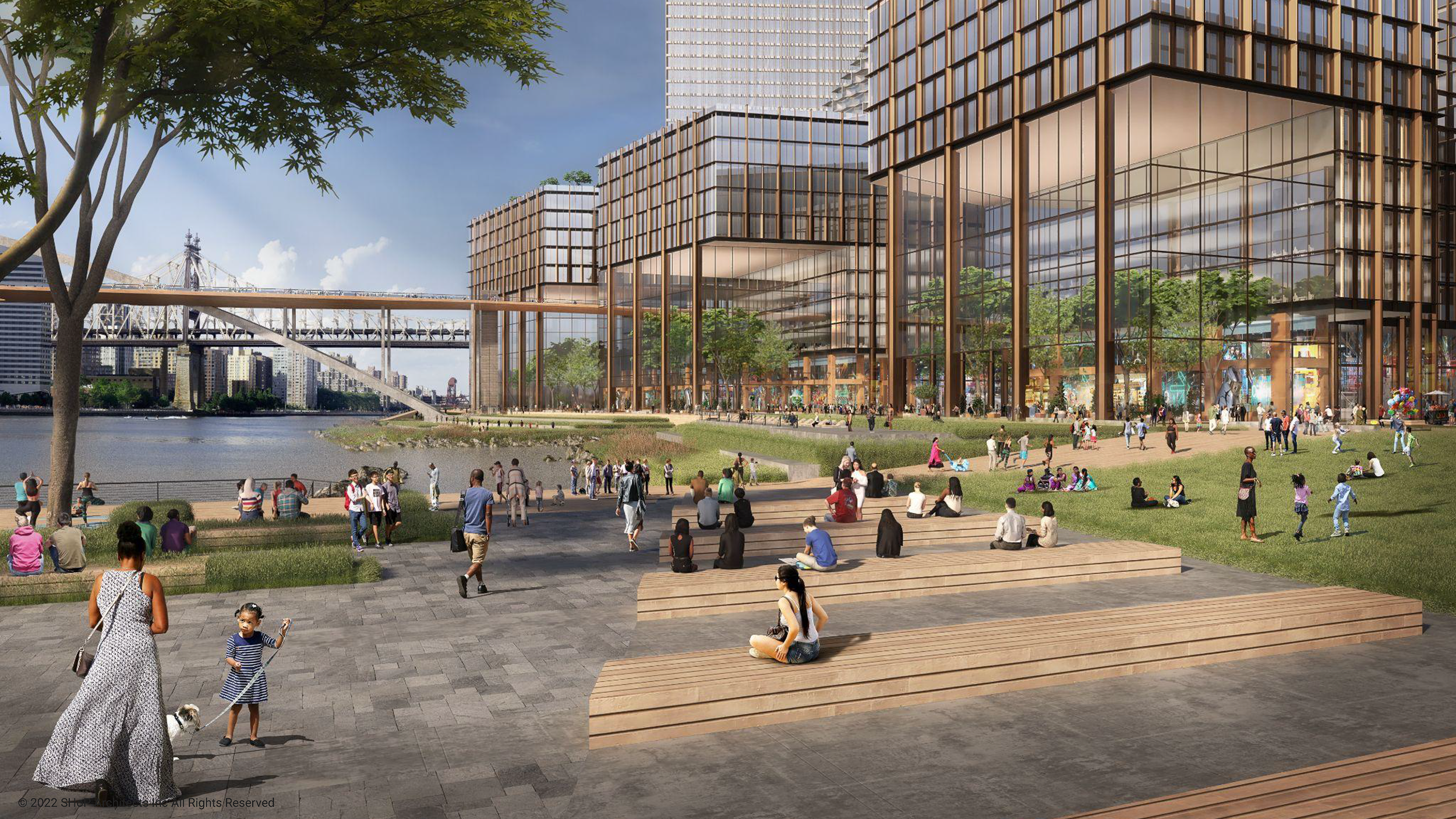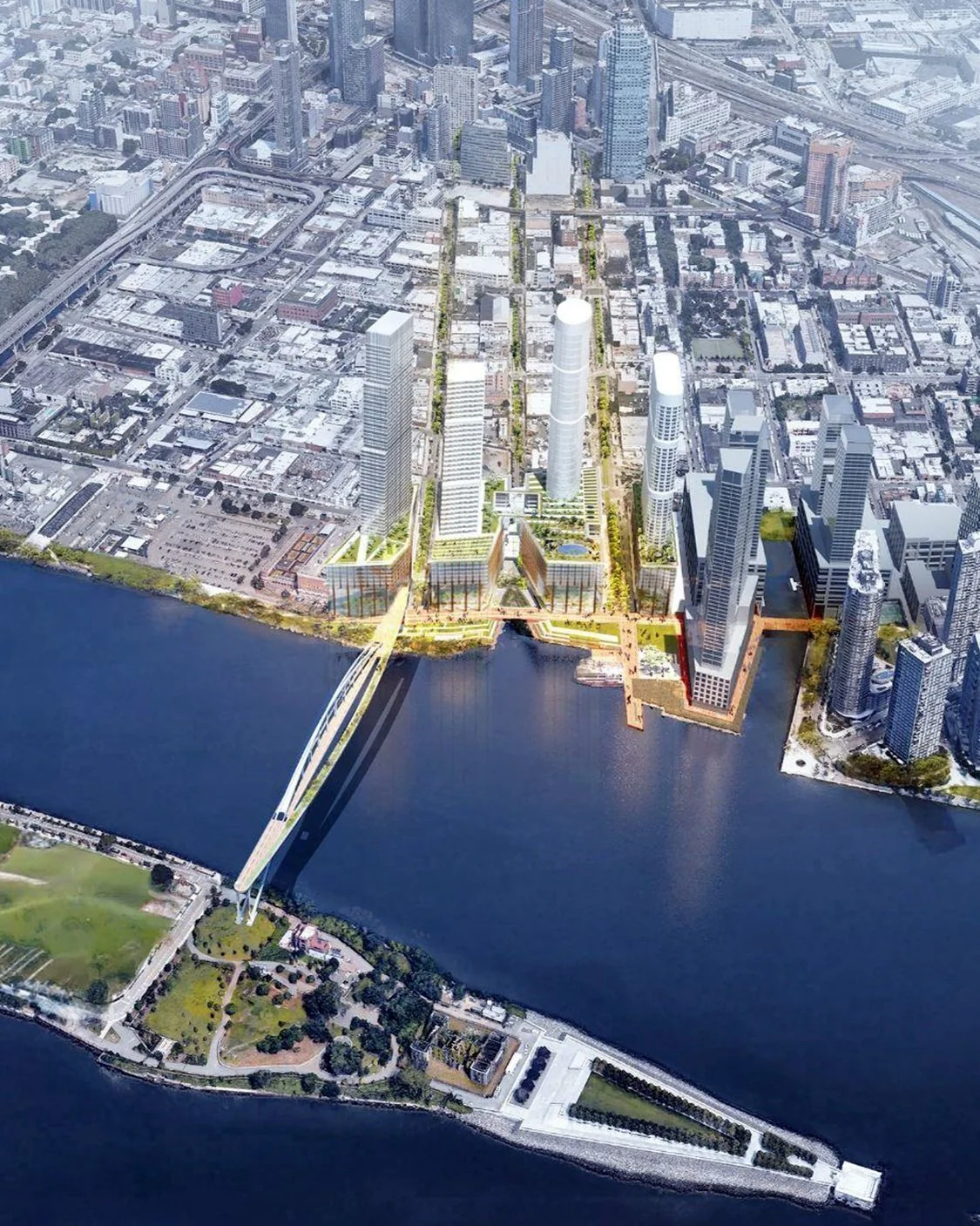NEW YORK | NY
RiverLInC
Located on the East River in Long Island City, the planned 12 million SF RiverLInC mixed-use development is creating New York City’s first green energy district. From the heart of the Anable District community, REDI’s on-site River Green Power plant will provide power to this 28-acre concentration of residential, commercial, civic, and recreational buildings and spaces.
Project Size: 11 million square feet
GHG Reduction: 10,000 tCO2e*
*tonnes (t) of carbon dioxide (CO2) equivalent (e)

Water Energy
REDI’s RiverLInC energy system uses geothermal technology and the water of the East River as an energy source for heating and cooling, and leverages wastewater heat recovery, thermal storage, and simultaneous heating/cooling exchange to provide thermal utilities.
Coupled with carbon-free electric utility sources, the system meets marketplace demands for affordability and environmental goals, readily surpassing Local Law 97 goals and immediately achieving 2050 targets.

River source energy reduces districtwide energy use for cooling by 70-80%
Heat Pumps
Heat pumps accessing the ambient water temperature of the East River supply heating as well as cooling energy. River water is filtered and oxygenated as it passes through the system, improving water quality.
Geothermal technology
Geothermal technology draws and rejects heat from the earth’s constant temperature via a borefield distributed under open spaces and thoroughfares, reducing infrastructure demand while reducing carbon emissions. An integrated loop provides chemical-free hardscape snow and ice melt. Heat exchangers recover thermal energy from wastewater.
Energy storage
Energy storage captures heating and cooling production during periods of lowest demand for use meeting load during peak demand, simultaneously right-sizing system scale and improving system resilience. Energy exchange balances simultaneous heating and cooling conditions to similar effect.

Sustainable Infrastructure
Deploying a Green-thermal grid of multiple technologies, REDI establishes the backbone of a modern, low-carbon energy system – sized to provide a sustainable infrastructure to the surrounding neighborhoods including Queensbridge Houses.
NEXT PROJECT

